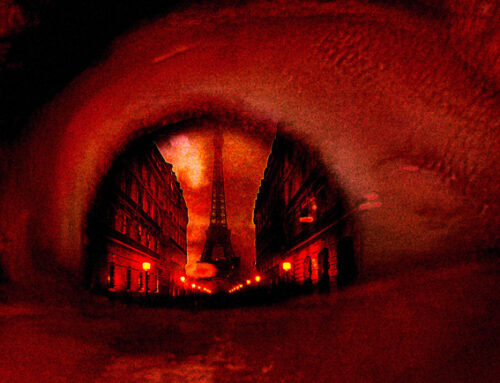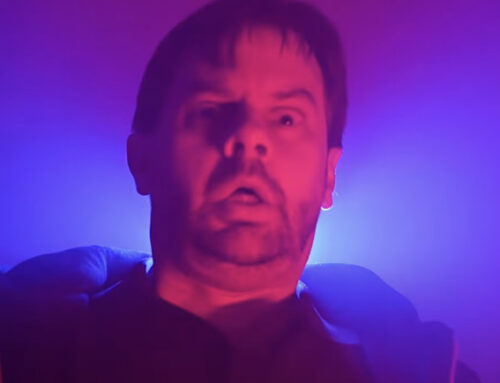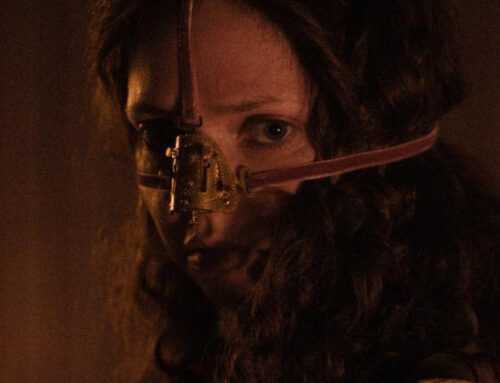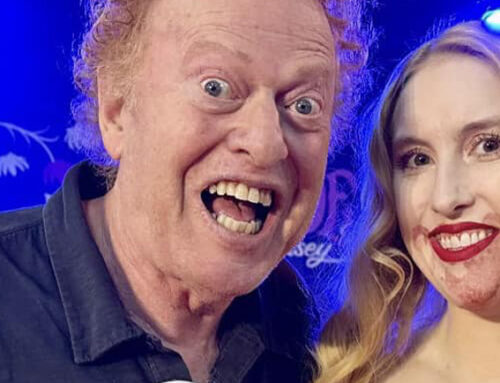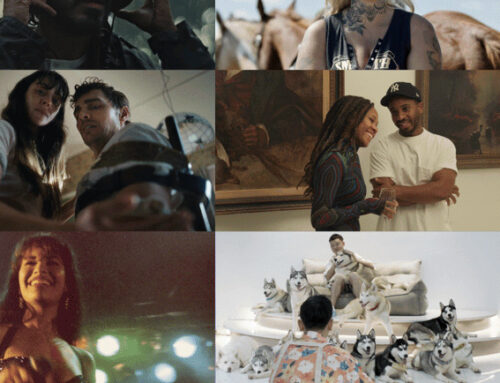Dev Singh is a film editor whose expertise brought the thrillingly horrific world of Resident Evil: Welcome to Raccoon City to life. His experience within the genre of horror runs deep, as he also recently worked on the film Spiral, which stars Chris Rock and is a continuation of the iconic Saw franchise. His projects carry his captivating editing style, providing audiences with a gripping experience.
Today, we chatted with Dev about memorable collaborations, inspirations, his work on Resident Evil: Welcome to Raccoon City, and more.
Tell us a bit about yourself. What was your first job in editing and how did you decide to pursue your craft professionally?
I’m a film and television editor based in Toronto, Canada and I began my career as an assistant editor, learning the craft from the ground up. After finishing a Bachelor of Science, I worked and traveled through India and Nepal for a year while I tried to figure out what career I wanted to pursue. I call it my early 20’s crisis – I had figured I’d have one early to avoid a midlife crisis later on. During the travels I applied to the Ryerson Film Program in Toronto, as my sister was in the Fashion Design and Marketing program there already.
When I was in Australia I called home and my family told me I had to come back because I was able to interview in Toronto for the film program. I flew back, and, soon after, began a journey towards being a filmmaker. I ended up choosing editing as my area of focus, as I had heard a story about good filmmakers starting out as editors. Most other students wanted to be writers/directors (which of course I wanted to be as well), and I thought just to be a little different I’d say I want to be an editor. As luck would have it – I was the only one in the class that wanted that. Ha!

Dev Singh
Who are some of your favorite long term collaborators?
I have many favorite collaborators in all areas of production – early long term collaborators include Kate Melville (Picture Day) and Adam MacDonald (Backcountry, Slasher) – I edited both of their first features and am looking forward to working with them again. Adam has a new film set to shoot early 2023 that I am very much looking forward to editing – I’ve read a few drafts of his script and it’s amazing! Other collaborators I hope to again work with include Shaka King (People of Earth, Judas and the Black Messiah), Pascal Laugier (Ghostland, Martyrs) and both Ed Gass-Donnelly (Lavender) and Johannes Roberts who I worked with most recently on Resident Evil: Welcome to Raccoon City.
Also Robert Kulzer was such a strong guiding force to the project and having a person like that in your corner was invaluable to the process. As well as Andre Coutu and his post production team! On RE, I worked with the amazing sound team Sounddogs, who I’ve worked with before on Lavender, and I just love the creative energy and storytelling chops they bring to the projects I’ve worked on with them…Composers such as Mark Korven, Colin Stetson and Sarah Neufeld, and Menalon as well. I’ve also had the opportunity to work with many filmmakers from Norman Jewison’s prestigious Canadian Film Centre, where I was an editor resident.
What scene was the most interesting to work on for Resident Evil: Welcome to Raccoon City?
The most interesting and fun scene to edit in RE was the truck crash sequence – first, it was an element of the game, and the truck was an exact duplicate design of the game truck. Yet, the game was just a jumping off point for the sequence Johannes Roberts directed. It most definitely embodied the spirit of the movie in that it was both a tense parallel action sequence with a comedic element that made it a full on, over the top, kind of fun scene. It had a rhythmic juxtaposition of a truck careening through town and the stillness of a rookie asleep at his desk while listening to a wonderfully absurd pop song. Johannes has said to all of us that we always need to go over the top to find where the edge is and we strove to go way past over the top – just go bonkers with it – and it was so much fun to build the beats and moments in the edit.
It was a very collaborative sequence, as it was designed by Johannes first, then employing the stunt drivers and Jo Hughes and her VFX team at Mr X. Maxime Alexandre and his team were finding the most dynamic angles to shoot from the grill of the cab swinging around the back of the truck and up the side, which was such a great shot! Mark Korven’s score – Dashen Naidoo’s sound design and the Doby Atmos mix was amazing – done by Andrew Tay and Brett Killoran. The amazing song by Jennifer Paige “Crush” and comedic performance of Avan Jogia and the deadpan delivery of Donal Logue. It was a really fun scene that ended up getting some notice in a review in the NY Times. Both Maxime and myself were noted, and it was the first time my name has appeared in the NY Times, so that was kind of a cool moment I could tell my family about!
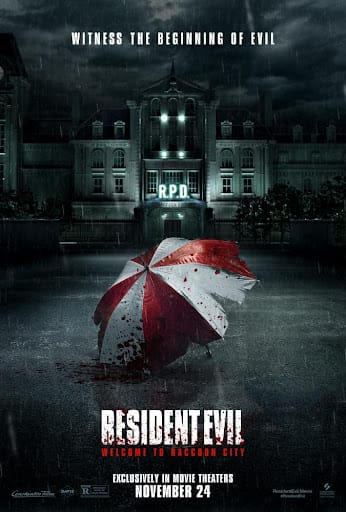
Courtesy of Sony Pictures
What gear do you tend to use, especially in the production of Resident Evil: Welcome to Raccoon City?
I tend to be a bit of an editor gear head – I like to try different programs and new software and hardware pretty regularly. On RE, we used Avid Media Composer with Nexis for the shared storage. VFX had a mirror of our project, so we could send them updated cuts, which they would send back, and we would have our new cuts populated quickly with new versions of VFX shots in progress. We would also have weekly meetings where we discussed the development of those shots and the edit in general, which was an amazingly efficient way to work.
I also like to do a lot of sound work and music generally, but on a film the scale of RE, I get to have composer sketches to work with as well as Dashen’s sound design early sketches to work with while we drill deeper along the sound concepts and music. I loved having that flexibility and knowledge through the process – communicating with all these departments while editing feels very freeing and collaborative and offers a lot of opportunity for experimentation.
Who are some of your influences?
My influences are vast and many… I find myself artistically influenced by artists, writers, painters, scientists, mathematicians, filmmakers and philosophers throughout history and many contemporary ones as well. Mainly I find myself drawn to those types of thinkers who have a bit of a mischievous and inquisitive streak within them. For example, filmmakers like Robert Altman wanting to make an ensemble piece like Nashville and execute it by having all his performers wearing lavaliere mics so he can record all of them simultaneously.
Jean-Luc Godard using a 16mm portable camera and using jump cuts to evoke an emotion and feeling of rebelliousness and spontaneity. Dario Argento’s use of color. Mathew Barney’s Cremaster Cycle – Kelly Reichardt’s politics and naturalism – there’s far too many to name. But within them all is an explorer’s spirit and I strive to take some of that into my own approach to the craft of storytelling and the exploration of character and tone.
What is your dream project? Dream collaborators?
I’m a big fan of modern horror and its contributors around the world. I would love to work with Gaspar Noe, Claire Denis, Julia Ducarneau and Claire Oakley. Park Chan-wook is an amazing filmmaker and I was so influenced by his Vengeance Trilogy. Jee-woon Kim and Na Hong-jin.
And of course Ari Aster, the Safdie Brothers, Jordan Peele, Robert Eggers and of course Shaka King who I had the distinct pleasure of working with on. I’ve been spoiled by the people I’ve had a chance to work with and meet along the way as they have taught me so much about art, film and life, and I count myself fortunate to have worked with all the wonderful filmmakers who have given me the opportunity to be a steward of their films and become their friends and creative collaborator.
Where can we find you on social media?
I’m a terribly sporadic social media person but one can find me on IG @djsingh32 where you’ll find the occasional photo of my family and on twitter @devsingh32.
–
Thank you for reading! You can learn more about Dev Singh here.

